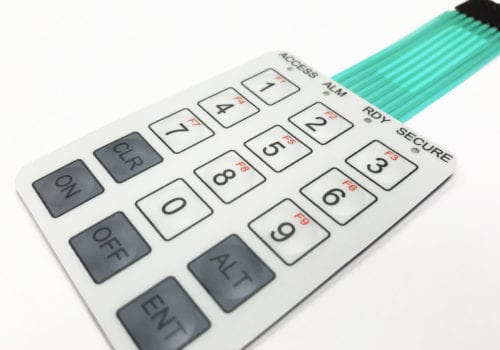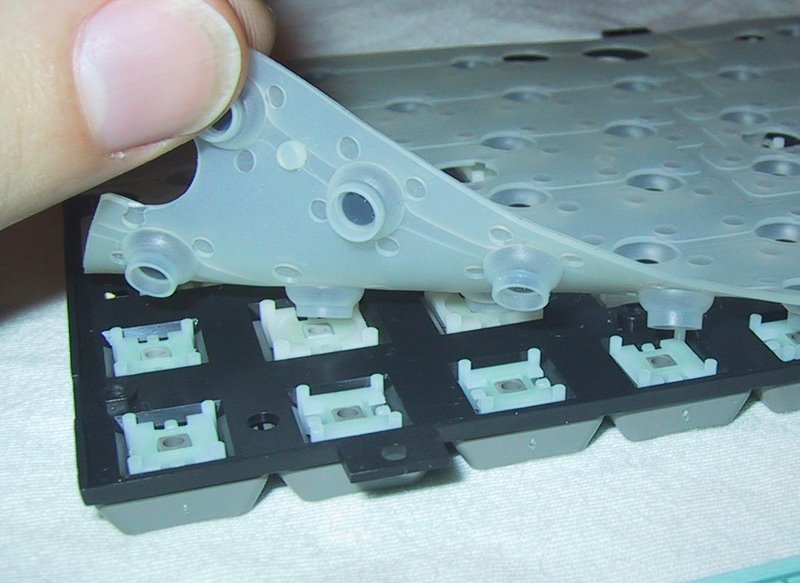The Duty of a Membrane Switch in Modern Touch Interfaces and Controls
The Duty of a Membrane Switch in Modern Touch Interfaces and Controls
Blog Article
Understanding the Functionality of Membrane Layer Changes for Interface Gadget
The performance of membrane layer changes stands for a significant improvement in user interface style, incorporating efficiency with visual convenience. As industries progressively focus on user experience, comprehending the subtleties of membrane layer switch innovation comes to be important.
What Are Membrane Layer Buttons?
Membrane switches are ingenious user interface devices that help with user communication with digital tools. These functional parts consist of multiple layers, including a graphic overlay, spacer, and a printed circuit layer. The design allows for a seamless integration into various digital tools, enhancing both the visual and useful facets of customer interfaces.
Membrane layer buttons are frequently utilized in a variety of applications, from family home appliances to industrial machinery and medical tools. Their building and construction typically features a slim account, making them an ideal selection for portable styles. The tactile feedback provided by these buttons can be crafted to satisfy particular user preferences, ensuring reliable interaction between the customer and the gadget.
Sturdiness is one more significant advantage of membrane switches, as they are resistant to dirt, wetness, and chemicals, which enhances their life-span sought after atmospheres. Additionally, these buttons can be customized in terms of form, size, and visuals style, enabling for branding and user-specific features. On the whole, membrane switches over stand for a practical option for enhancing individual experience in digital tools, incorporating performance with visual appeal in an effective way.
Just How Membrane Layer Switches Over Job
Operating on a straightforward principle, membrane changes use a layered construction to sign up individual input successfully. Each button consists of multiple layers, including a published circuit layer, a spacer layer, and a top visuals layer, which are made to interact perfectly. When a user presses the top layer, it compresses the spacer layer, bringing the conductive components of the circuit layer into contact with each various other.
This get in touch with creates a closed circuit, indicating the tool to perform a details function. The style permits different arrangements, including responsive feedback, which can improve the customer experience by giving a physical sensation upon activation. The materials utilized in membrane layer buttons commonly include versatile substratums, such as polyester or polycarbonate, which ensure toughness and resilience versus damage.

Trick Advantages of Membrane Buttons

One more substantial advantage is their compactness. look at here Membrane switches are thin and light-weight, which allows producers to save area in their gadgets without sacrificing functionality. This function is particularly beneficial in applications where weight and volume are crucial factors to consider.
In addition, membrane buttons are resistant to dust, wetness, and chemicals, enhancing their longevity. This strength extends their lifespan hop over to here and decreases the need for regular replacements, leading to expense savings gradually.
Moreover, the tactile comments provided by membrane switches can be optimized to improve customer communication. They can consist of attributes such as increased buttons or audible clicks, enhancing usability and customer experience.
Applications Throughout Industries
Interface devices utilizing membrane layer buttons prevail in a broad variety of markets, showcasing their flexibility and capability. Membrane Switch. In the medical industry, membrane layer switches are essential to tools such as diagnostic tools and patient surveillance systems, where their longevity and ease of cleaning are crucial for maintaining hygiene standards. In the automotive industry, these buttons are used in control panel controls and infomercial systems, offering a streamlined and modern-day user interface for users.
Additionally, the consumer electronic devices industry benefits from membrane buttons in appliances and handheld tools, where compact layout and easy to use user interfaces boost individual experience. Industrial applications also take advantage of membrane switches over for control panels in equipment and automation systems, highlighting their robustness and resistance to rough atmospheres.
In the aerospace and protection industries, membrane layer switches are used in cabin controls and equipment, where integrity and efficiency under extreme problems are extremely important. In addition, the pc gaming market progressively incorporates membrane layer buttons in controllers and gallery equipments, adding to visit this web-site an interesting individual experience. Generally, the convenience of membrane changes enables their prevalent use throughout many sectors, highlighting their importance in contemporary interface style.
Future Trends in Membrane Switch Over Technology

In addition, making use of sophisticated products, such as polycarbonate and polyester films, is expected to rise, offering boosted durability and resistance to ecological stress factors. These materials add to the overall long life of membrane layer switches, making them suitable for harsher industrial applications.
Additionally, the consolidation of wise modern technology, consisting of IoT connection, will make it possible for membrane layer switches to communicate with various other devices and systems, helping with an extra interactive user experience. This trend straightens with the growing need for smart devices across various markets, from medical care to customer electronics.
Last but not least, personalization alternatives are prepared for to broaden, allowing suppliers to produce bespoke options tailored to details individual requirements and preferences. These advancements will place membrane switches as necessary parts in the evolution of interface modern technology.
Final Thought
In conclusion, membrane layer switches represent a crucial innovation in user interface technology, using a dependable and versatile option for diverse digital applications. As innovations in material scientific research and touch noticing modern technologies continue, the functionality and applicability of membrane layer switches are anticipated to increase, enhancing their significance in modern digital gadgets.
Report this page